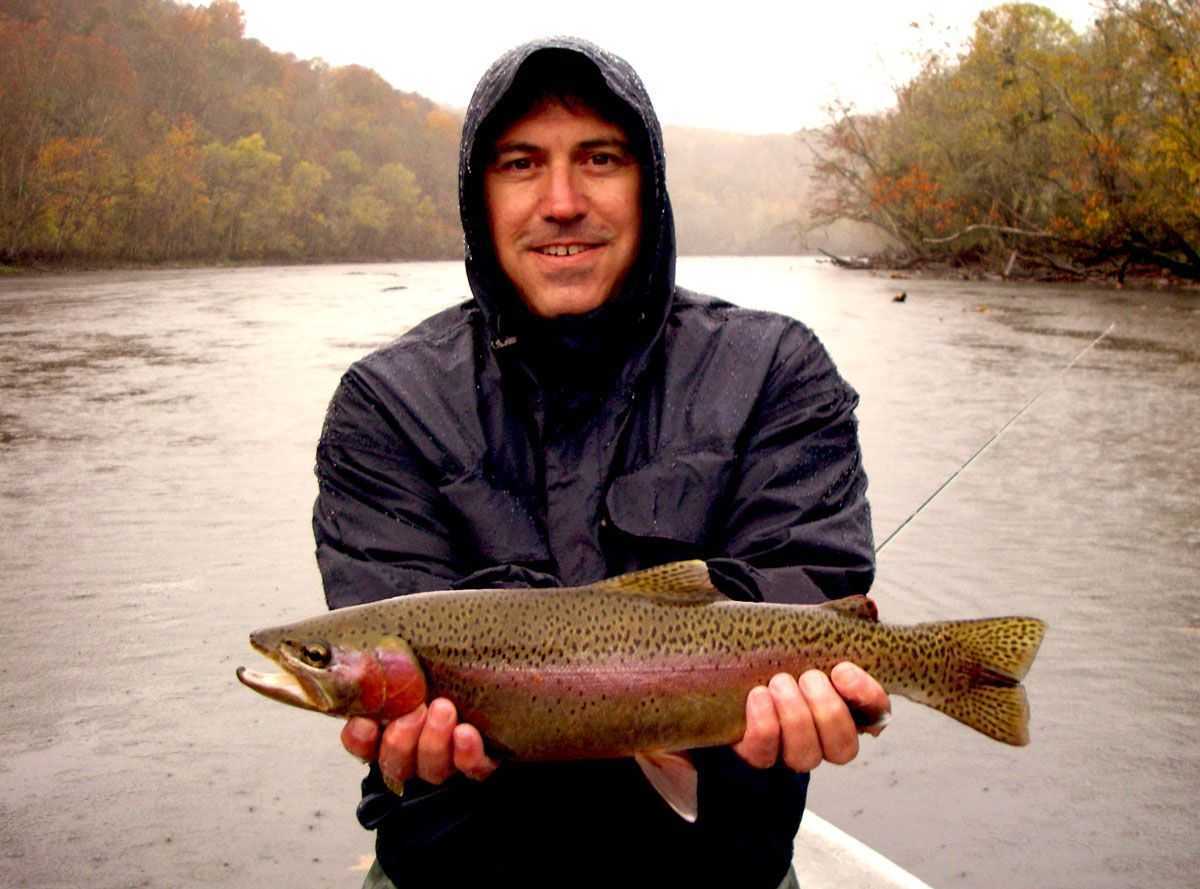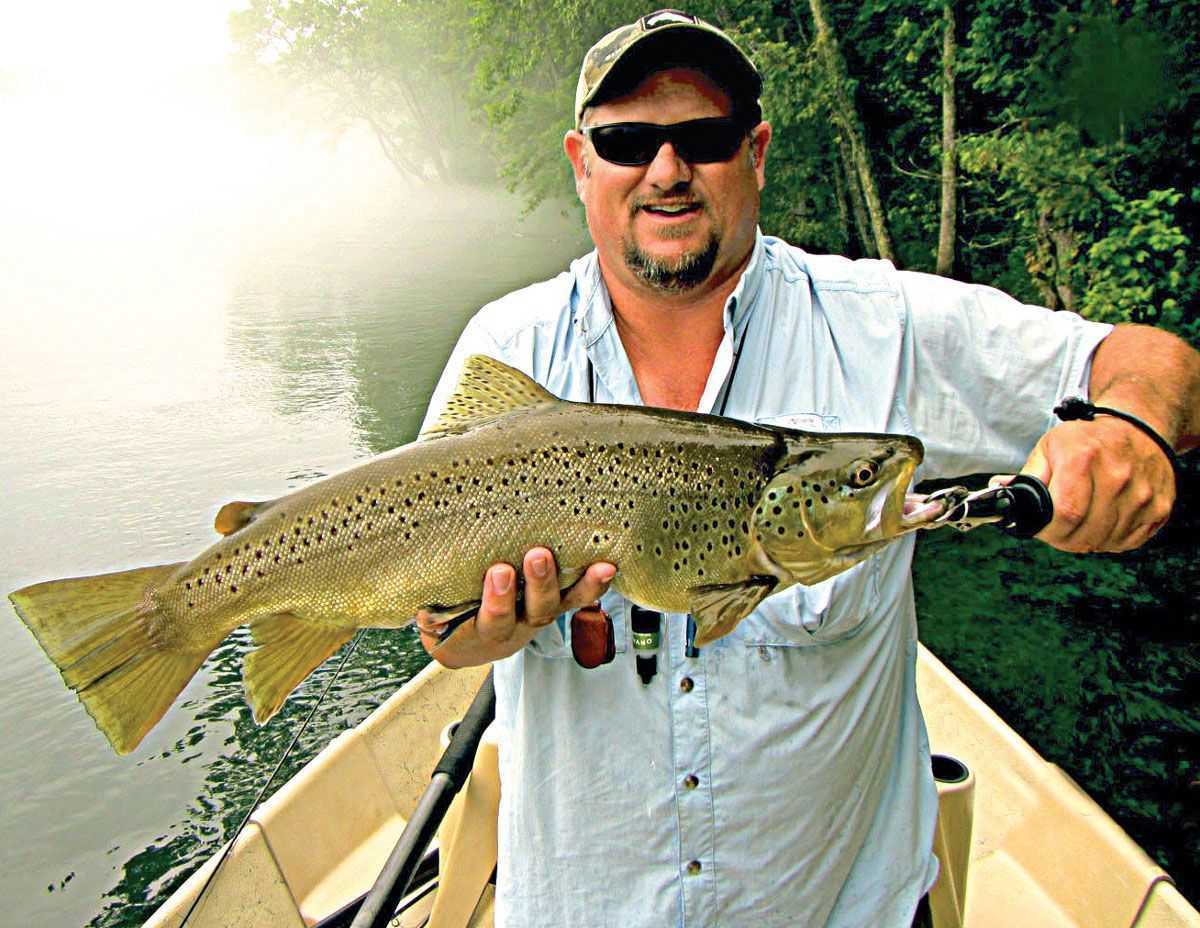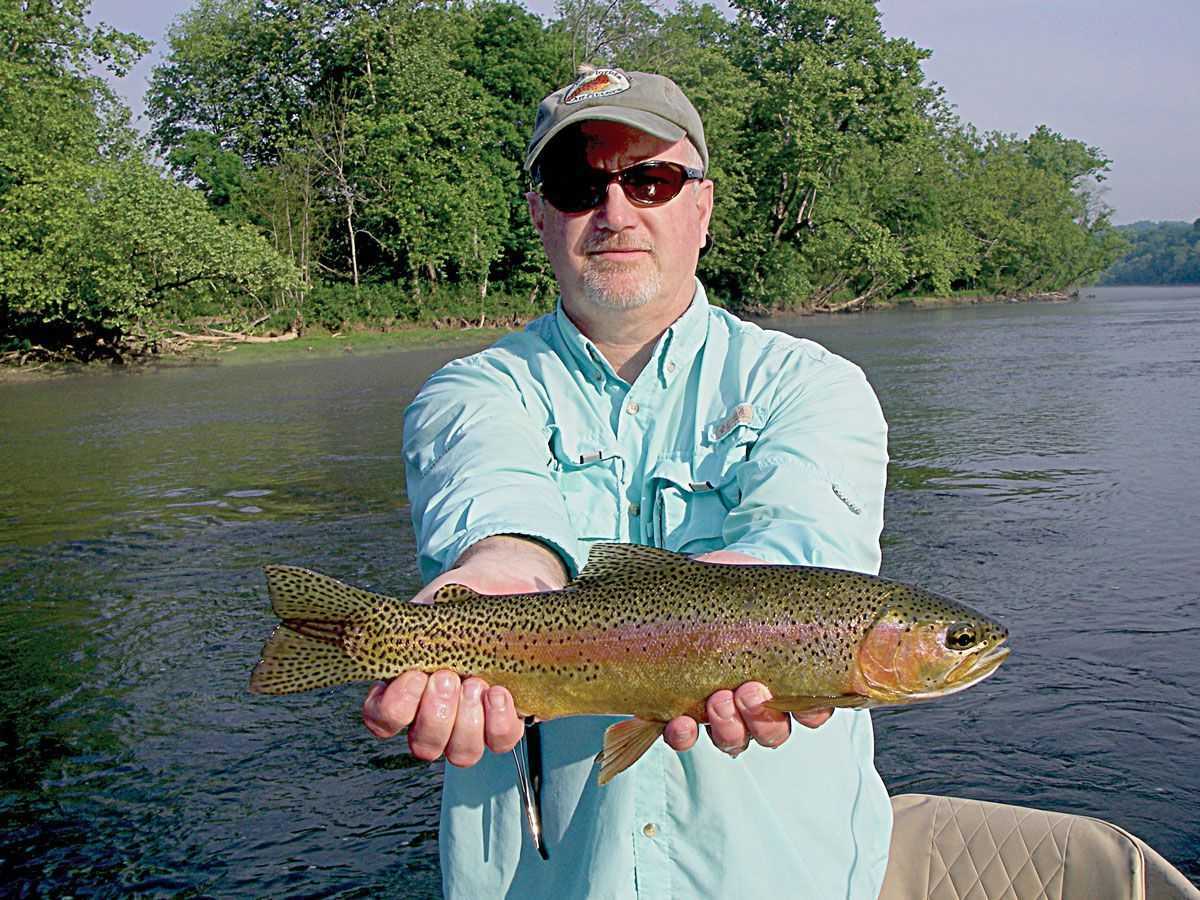
By Michael “Rocky” Cox
Rocky Top Anglers
Trout fishing for many people requires a week’s worth of vacation and an airline ticket to Montana. The fact that east Tennessee harbors several world-class trout fisheries goes unnoticed by many. Folks that do know about our trout fisheries love the fact that they can escape the normal routine by spending a few hours on the trout stream anytime they want. I’m going to spotlight one of those great fisheries, the Clinch River located in Anderson County Tenn.
The Clinch River is one of Tennessee’s most well known trout tailwaters, and for good reason. It was the first tailwater in the state to be stocked with trout, and it’s the home to Tennessee’s state record brown trout (28-pounds, August 1988). It regularly produces trout between 2 and 4 pounds, with 10-plus-pounders popping up on occasion.
What makes the Clinch River so accommodating for trout? Well, it’s fed by Norris Lake, which is very deep and seems to have an endless supply of cold water. The river also boasts a very rich benthic population, which is another reason these trout flourish. Icy cold waters and lots of food are a sure-fire recipe for large fish. But let’s look a little deeper. Tennessee manages the Clinch River under a slot limit that protects fish ranging in length from 14 to 20 inches. Fish inside this protected slot must be released immediately, allowing more of the fish to attain large sizes. All these factors come together to make an incredible tailwater trout fishery located just minutes from Knoxville, Tenn.

The food base in the Clinch River is made up of midges, mayflies, caddis flies, crustaceans, mollusk and smaller fish. There’s never a lack of food in the river. Midges hatch daily and comprise a large percentage of most of the trout diet. Sow bugs and scuds will also be a favorite of the fish anytime they drift along. Seasonal hatches of mayflies and caddis will play a big role during the warmer months of the year, and the pre adult patterns can be productive anytime. The key rule to remember when choosing your fly is to go small. Most of these food items are small. My clients often comment on how it must be impossible for fish to see such tiny offerings. Then they start catching fish on them and quickly learn to believe in the small stuff. I rarely fish anything larger than a size 16 pattern when I’m fishing on the Clinch. Common sizes in my fly box range from size 16 on the large end to size 26 on the small side.
Now that you have an idea about patterns to fish, let’s take a look at setting up your rod for success. Nine-foot or longer rods tend to work better, as the extra length makes line management much easier. Five-weight rods seem to be a favorite of most Clinch regulars, but I’ve seen many anglers work rods from four weights to six weights. Leaders should be 9 feet or longer and should be tapered down to 4x to 6x. The slow, clear waters of the Clinch require fine tippets to avoid spooking the fish. High flows, clouds, fog or a slight stain can afford you the luxury of using heavier tippet than normal, otherwise the clear water will call for 5x and 6x tippets. Strike indicators should be limited to small pieces of yarn, preferably in a neutral color.
The tailwater factor should always be considered when visiting the river. A tailwater is the flowing river below a dam. Water released through the turbines for power generation will raise water levels in the tailwater. Most anglers, especially wading anglers, prefer the water to be low with no generation from the dam. Long periods of zero flow will give the best conditions for wading, while higher flows will require a boat.

You’re going to want to know a few things about the water flows before you head out to the Clinch. What has the generation schedule been for the last eight hours? What’s the flow schedule look like for the rest of the day? How long are the turbines going to be off? Understanding the flow and how it drains and fills is crucial to finding the right conditions. Water will drop quickly at the dam when the water is cut off, yet the high water may take many hours to drain down if you’re 14 miles downstream. So you have to consider the flow history to know what flows to expect at your destination. Likewise, water will rise quickly at the dam when it’s turned on but may take several hours to reach downstream locations. TVA has a useful website to learn the flow history and schedules, find it here: http://www.tva.gov/lakes/noh_r.htm .
The Clinch features 14 miles of great tailwater fishing. The best public access can be found in the first few miles down from the dam. TVA maintains several improved facilities in this area that include restrooms, boat ramps, canoe launches and handicap access. Highway 441 out of Norris, Tenn. will take you to most of these upper-river destinations. More public access can be found on the lower river, off of highway 61 in Clinton, Tenn. The Second Baptist Church allows anglers to park and access the river from their property. Please remember to be respectful to their property. The rest of the tailwater is bordered by private land and will require landowner permission to visit. Again, always respect the landowners and their land by asking to access, and always leave it cleaner than you found it. Boating access can be found at the Peach Orchard ramp and at highway 61.
[easy-social-share]